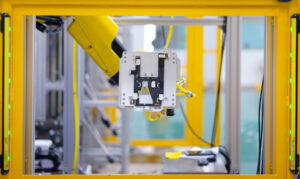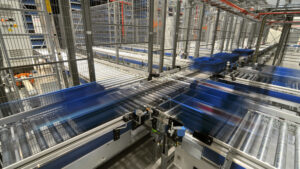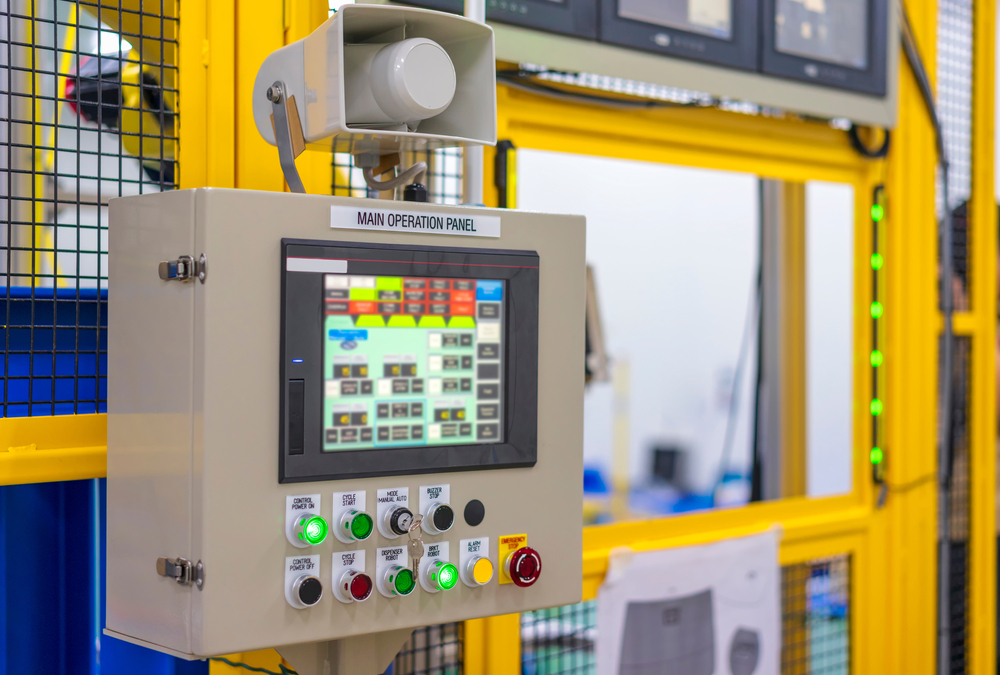Developed over 70 years ago by Erwin Sick, safety light curtains are relied upon in numerous industrial and commercial applications to ensure people are kept safe and processes operate as intended. Safety light curtains are very popular, and it can be easy to consider them as a simple fail-safe on/off device and as a substitute for protective fencing.
Over the decades, safety light curtains have no doubt saved countless people from injury and death at the hands of dangerous industrial machinery. Amidst the hundreds of thousands of installations some of these may not be making full use of the capabilities offered by safety light curtains.
Design innovations and software development has transformed the practicality and versatility of these devices, adding significant improvements to the original concept. A versatile range of multifunction light curtains has evolved, being easy to integrate into industrial communication networks and contributing to production process improvements and safety.
Where do you begin with a Safety Light Curtain Installation?
The starting point of any safety light curtain installation must be the immediate danger being guarded against, and then the space available. There are multiple attributes to consider regarding the physical properties of light curtains. EN ISO 13855 is the technical standard for the positioning and sizing of safeguards, based on the physical approach of the human body or body parts that need protecting. In addition, properties such as IP rating, current consumption, indicators and so on will need to be considered.

Safety Light Curtain Characteristics and Considerations
Scanning range
The scanning range is the maximum distance between a light curtain’s sender and its receiver. With active/passive units the distance between these parts is known as the scanning range. Safety light curtains come with either a fixed, selectable, or auto-adjusting range. Selecting the correct range type ensures that the system is the best fit for the application. For example, using a long range, high power device over a short distance may cause reflections from nearby surfaces which could make the installation a hazard.
Protective Field Height
The height of a light guard is based upon the access to the hazard. For instance, if a light curtain is protecting against ‘point protection’ then it must cover the whole aperture. If access protection is required, then different heights can be used based on the required number of beams, the height from the floor, plus the potential for reach over.
Safety Light Guard Resolution
The resolution affects the mounting position with respect to a hazard. Finger protection and hand protection refer to resolutions of 14 mm and 30 mm respectively. The higher the resolution, the better the detection capability, meaning the light curtain can be mounted closer to the machinery requiring protection.
Higher resolution light curtains are generally more expensive than lower resolution options, switching to a lower resolution results in an increased distance between the safety light curtain and the safety hazard, which may be impractical.
Active/passive Light Curtains
Active/passive systems are a low cost option, consisting of two devices, one contains the emitting and receiving elements and the other has a reflector to return the beam back to the receiver.

Safety light Curtain Functionality
The simplest function of a light curtain is turning the light beams off when the beams are obstructed, signalling a machine stop, and if the area is safe then a reset can be performed. This stop/start style of operation can be disruptive, but fortunately light curtains have evolved to perform multiple functions such as internal reset, device monitoring, beam coding, muting, blanking, and pattern recognition.
Restart interlock
The two main interlocking modes that can be set in are automated – output safety switching device (OSSD’s) signals go high when the beams are free, while manual OSSD’s go high when the beams are free and then a reset button is pressed. Automated restarts can only be used when it is not possible to stand behind the light curtain without being detected. A manual reset can utilise an external safety relay or a safety PLC if the system has the capability.
Eternal Device Monitoring (EDM)
The safety performance level for a safety function can be increased if fault detection is implemented. This monitoring function checks external devices such as control elements, contactors, or relays. If an unsafe state is detected, the safety device can lock out, which is performed by monitoring physically linked external device channels. If the outputs go high, the returning EDM signal from the switching devices must go low if the system is in a safe condition. Otherwise, there is a fault.
Blanking
In certain applications it may be necessary to allow objects to protrude through the light curtain field without signalling an obstruction. A blanking feature is used to modify the detection capability to prevent interruption to the workflow and can either be fixed or floating to allow a variable position of the object.
Safety Light Curtains – Material Throughput
Muting
In many safety light installations, allowances are made to allow objects through while reacting to presence of people. This could include installations such as conveyor lines with items passing from one area to another, or automated warehouses where staff are excluded from specific zones.

Sensors can be used to identify an object and allow passage into a hazardous area while still detecting a person’s presence, which is called muting. Popular methods are cross beam and four sensor muting. Other methods include the use of photoelectric cells, inductive loops, safety laser scanners and so on.
Pattern Recognition
Certain safety light curtains can perform complex algorithms on their individual beams. Meaning that not only can it detect if the beams are obstructed or not, but which beams and the sequence of the interruption. Light curtain can detect patterns, objects, direction of travel, and maintain safety while allowing known objects to enter and leave the detection zone.
Beam Coding
Multiple beam systems utilise optical frequencies in the infrared spectrum. Interferences could occur if several light curtains are used in proximity leading to a dangerous situation.
As a solution, some safety light curtains have a beam coding facility, allowing a receiver to distinguish which beams came from which specific sender. When beam coding is utilised it could affect response times and the overall range of the light curtain and should be considered.
Making Sense out of Safety Light Curtains
Modern safety light curtain installations are far more versatile and capable than their distant ancestors. Packed with state of the art technology which makes them more attuned to modern production processes and the industry 4 requirements of today. As outlined above these versatile safety devices are capable of a wide range of manual and automated activities that can drastically improve the safety and productivity of industrial and commercial installations.
When installing safety light curtains it’s not always just as simple as placing them in the front of a machines access point and that’s it. Logically, it makes sense to understand what functionality and features are needed within the safety installation first, perform a risk assessment, and then choose the right safety light installation for that purpose. Kempston Controls is here to help you select the ideal safety light curtain solution for your installation, call us today and speak to our specialist technical teams.
View our range of Safety Light Devices
Have you read these?
Kempston Controls is committed to finding you the ideal solution for your application. Call us today on +44 (0) 1933 411 411, email us at sales@kempstoncontrols.co.uk, or alternatively contact us here, we will be happy to help.


